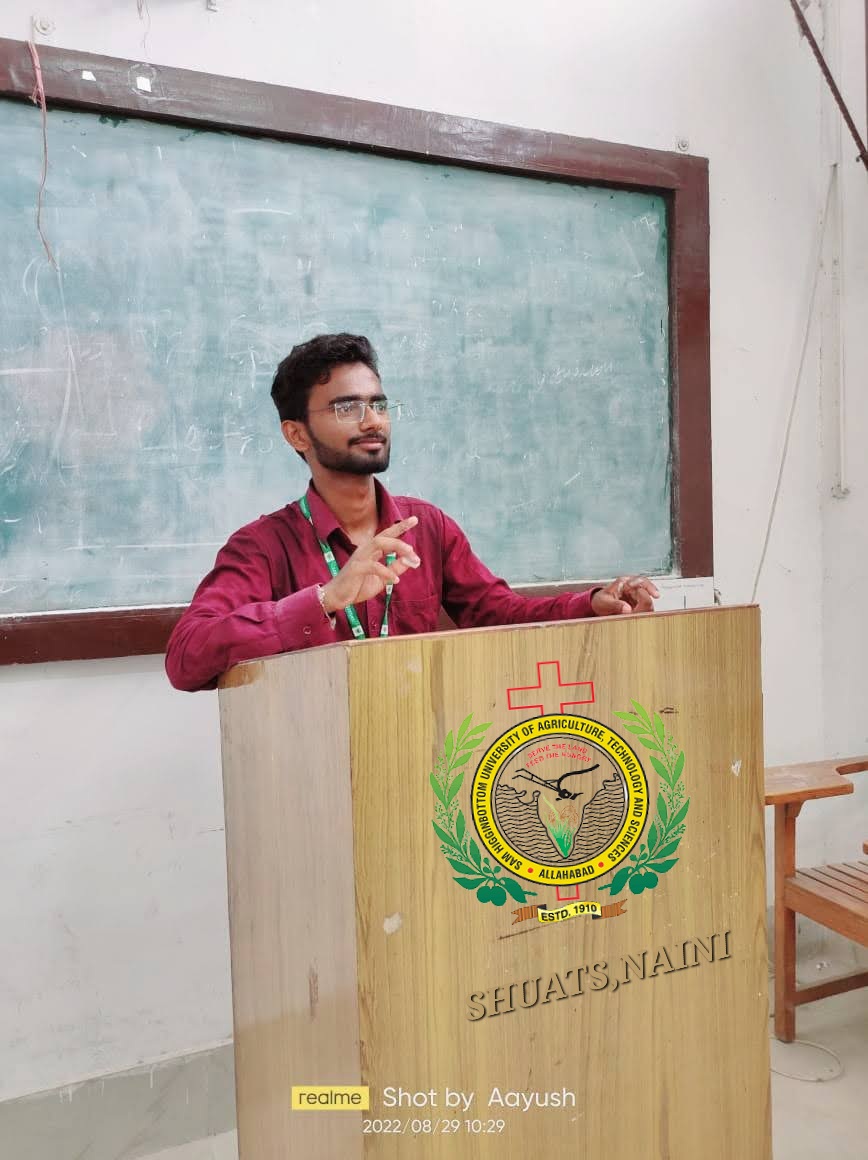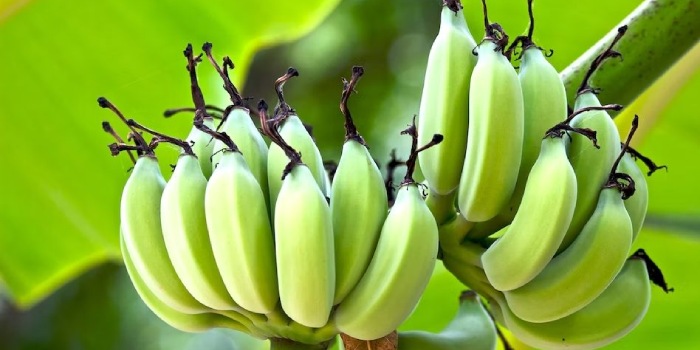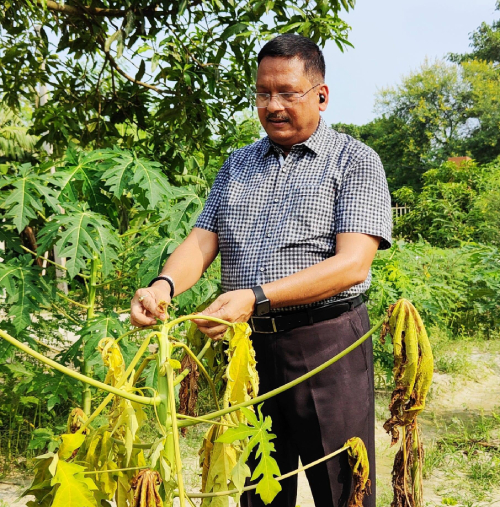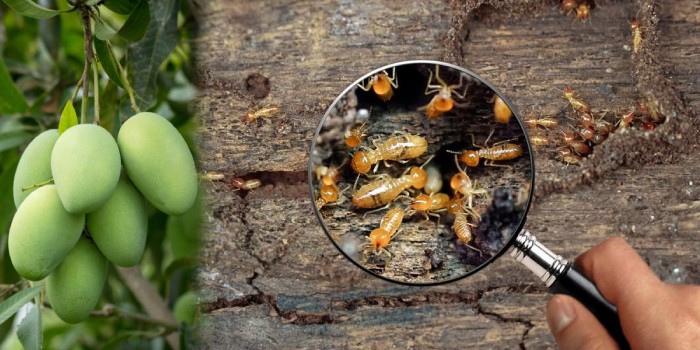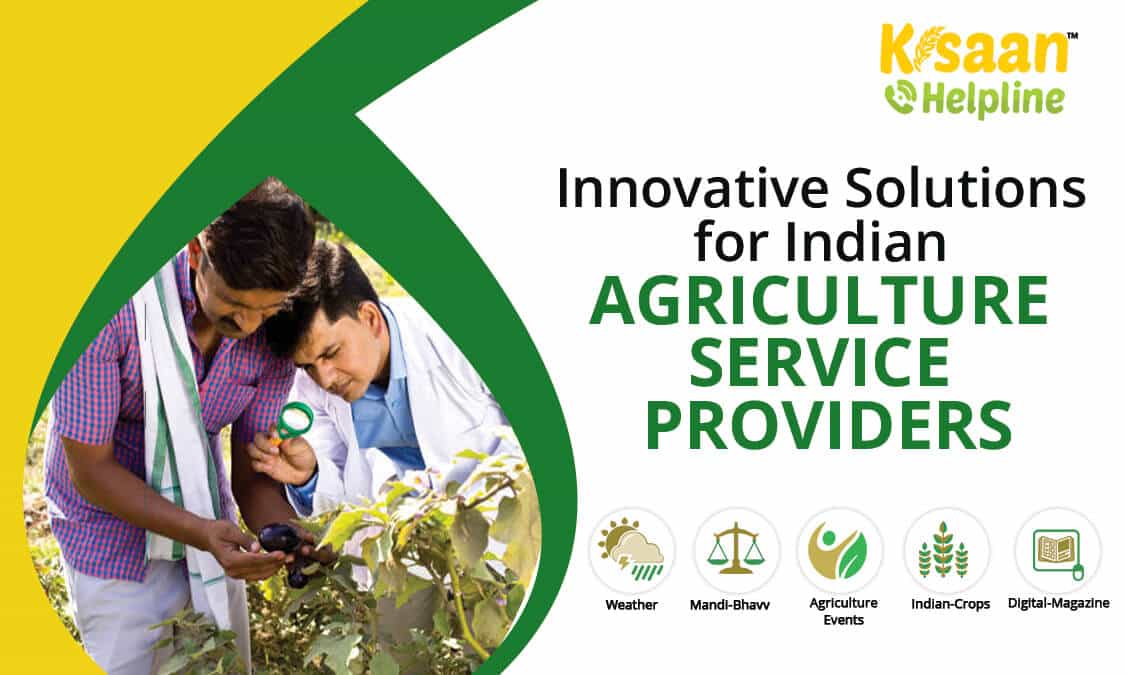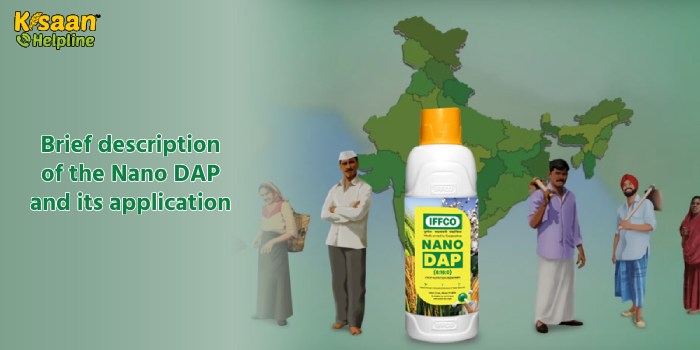
Title- Brief description of the Nano DAP and its application
- Raghvendra Kumar Kushwaha –( Research Scholar PG)
- Guru Dayal - (Field Coordinator)*
M.Sc. (Agri.) Soil Science,
Sam Higginbottom University of Agriculture,
Technology and SciencesAllahabad-211007,U.P
Corresponding author Gmail- rkk18200@gmail.com
*Self-Reliant Initiatives Through Joint Action (SRIJAN),
Regional office, Mahavir Nagar,
Manikpur, Chitrakoot, U.P.
Gmail– gurudayal20195@gmail.com
Introduction-
This is the second liquid nano-fertilizer in existence .One 500ml bottle of this fertilizer, which is sold in the market in the form of a bottle and is sufficient for one acre, contains up to 8% nitrogen and up to 16% phosphorus. It is applied as a foliar spray on crop, increasing production by 8 to 10%. It uses 50% less traditional DAP (Di- ammonium Phosphate) and costs 600 INR each bottle. Di-ammonium Phosphate, or DAP, is its full name. This form of traditional fertilizer was previously more expensive and only available to farmers, but in 2022, the “Nano Bio- technology Research Center” gave them a present by finding Nano DAP. The Indian farmer Fertilizer Co-operative Limited, or IFFCO, is credited with its discovery. On July 20,2022, IFFCO also received a patent for Nano DAP, and the “ Union Ministry of Agriculture” had also given Nano DAP notice to join the Fertilizer Control order. Various Agricultural Universities and KVK (Krishi Vigyan Kendra) conducted numerous trials of Nano DAP in crops, with 1100 crops totaling the majority of which were gram, pea, lentil, wheat, and mustard crops. In addition to this, it is also produced in significant amounts in Pap weep, Odisha, and Kalor (Gujarat). These facilities prepare between 150000 to 200000 500ml bottles daily. The primary goal of these production facilities was to minimize the usage of traditional DAP by 505. Additionally, conventional Dap has high levels of up to 8% nitrogen and up to 16% phosphorus.
Objective-
- Its primary goal was to lower the cost of production for farmers while raising government revenue.
- Environmental balance needed to be preserved while reducing soil and groundwater contamination.
- To use 50% less conventional DAP while increasing output per hectare by 8 to 10%.
Tips to use:-
It mostly has 16% phosphorus and 8%nitrogen is usable form. In addition, it is utilized twice in crop. Those being as follows-
| S.No | Spray | Use | Quantity |
| 1) | Initial spray | Treatment of the roots or the seeds | 5ml/ kg of seed |
| 2) | Another spray (Petal spray) |
30 to35 days following the crop’s sowing or transplanting | Sprayed as a 2-4ml/ liter water solution |
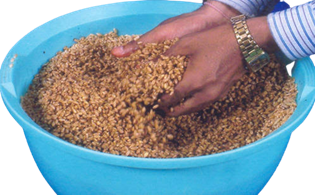
NANO DAP Initial spray
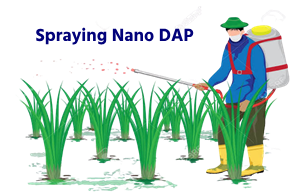
30 to 35 days after Transplanting (Second spray)
Effects in cropping using Nano Dap-
Nano Dap possess unique features which Enhance plant’s performance in terms of ultrahigh absorption, increase in production, rise in photosynthesis, and significant expansion in the leaves’ surface area. Besides, the controlled release of nutrients contributes in preventing eutrophication and pollution of water resources. Replacement of traditional fertilizer by Nano-Dap is beneficial as upon application, it releases nutrients into the soil steadily and in a controlled way, thus preventing the water pollution. In addition, it benefits plants in the ways listed below:
- Improved flower formation and seed production
- Stimulated root development
- Increased stalk and stem strength
- Improvements in crop quality, and increased resistance to plant disease
- Increased nitrogen N-fixing capacity of legumes
- More uniform and earlier crop maturity
Methodology-
It is a kind of liquid fertilizer that is applied to the lips of plants as a foliar spray using a solution of 2-4ml/per liter of water. Plants may easily obtain it and it enters the plant through the stomata in the leaves, and through the phloem, it travels to the various areas of the plant where it is needed. The supplied foliar spray is readily absorbed by the plant to the true of 80-90%.
Benefits-
- Because Nano DAP is affordable and readily available to farmers, it significantly raises their income.
- It is inexpensive and simple to transport from one location to another.
- Utilizing it in the field greatly improves the field’s fertility and productivity. It boosts the crop’s production by 8 to 10%.
- Plant quickly absorbs Nano DAP when applied as a foliar spray in the field, up to 80%.
- In addition to preventing ground water pollution, this decreases pollution of the land, water, and air.
Where to buy:-
Typically, a 500 ml bottle of it can be found on the market. It is easily purchased by visiting the official website of IFFCO Bazaar(iffcobazar.in) to buy through an online medium, and in addition to this, it is offered in the form of 600ml/ bottle in the IFFCO shop opened by IFFCO. Call the toll-free number 1800-103-1967 to acquire all the details if you want to learn more.
Difference between Nano DAP and Conventional DAP include:-
| S.No. | Nano DAP | Conventional DAP |
| 1. | 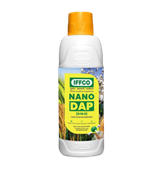 |
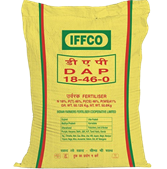 |
| 2. | It is a liquid fertilizer that is applied to crops as a foliar spray. | It is provided in solid form as crop top dressing. |
| 3. | It has an accessible form of 16% phosphorus and 8% nitrogen. | It has high concentrations of 46% phosphorus and 18% nitrogen. |
| 4. | It may be purchased in the market in a 500ml bottle, which is enough for 1 acre. | It can be purchased in the market in the shape of a 50 kg bag. |
| 5. | The going rate for a bottle is 600 rupees. | One bag costs 1350 Rupees. |
| 6. | Plants quickly use it up to 80 to 90%. | Only 30 to 40% are able to use the plant. |
| 7. | Farmers can purchase it for a modest cost. | It is available on the market, but it costs more. |

